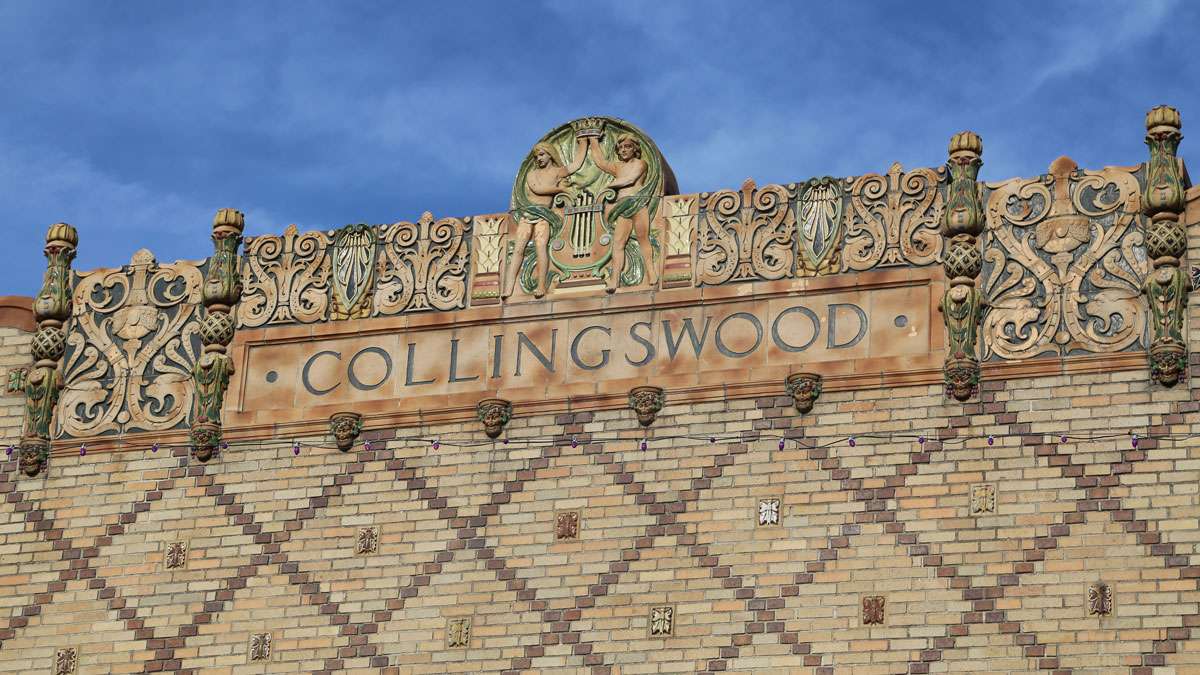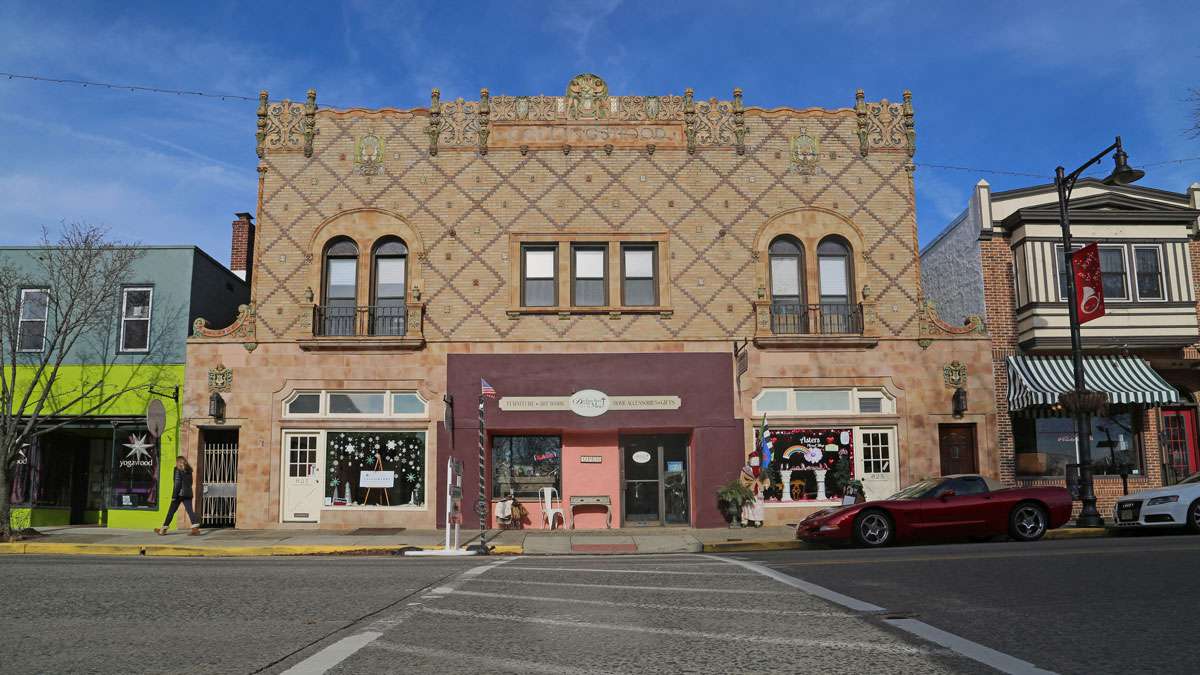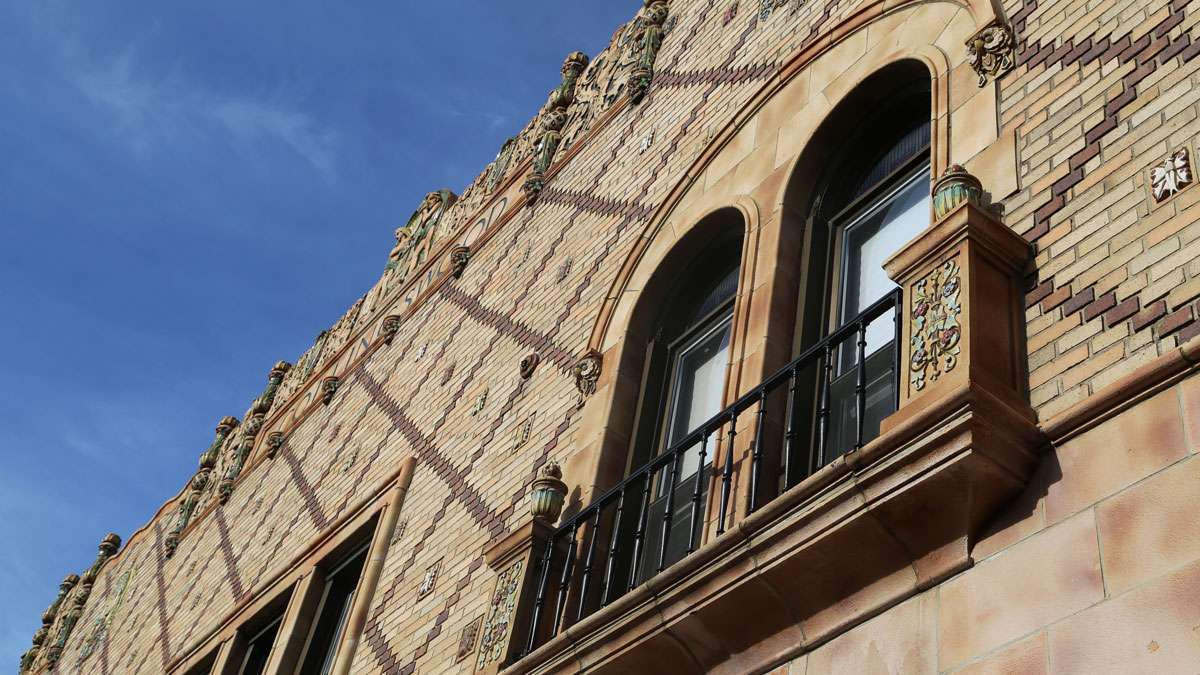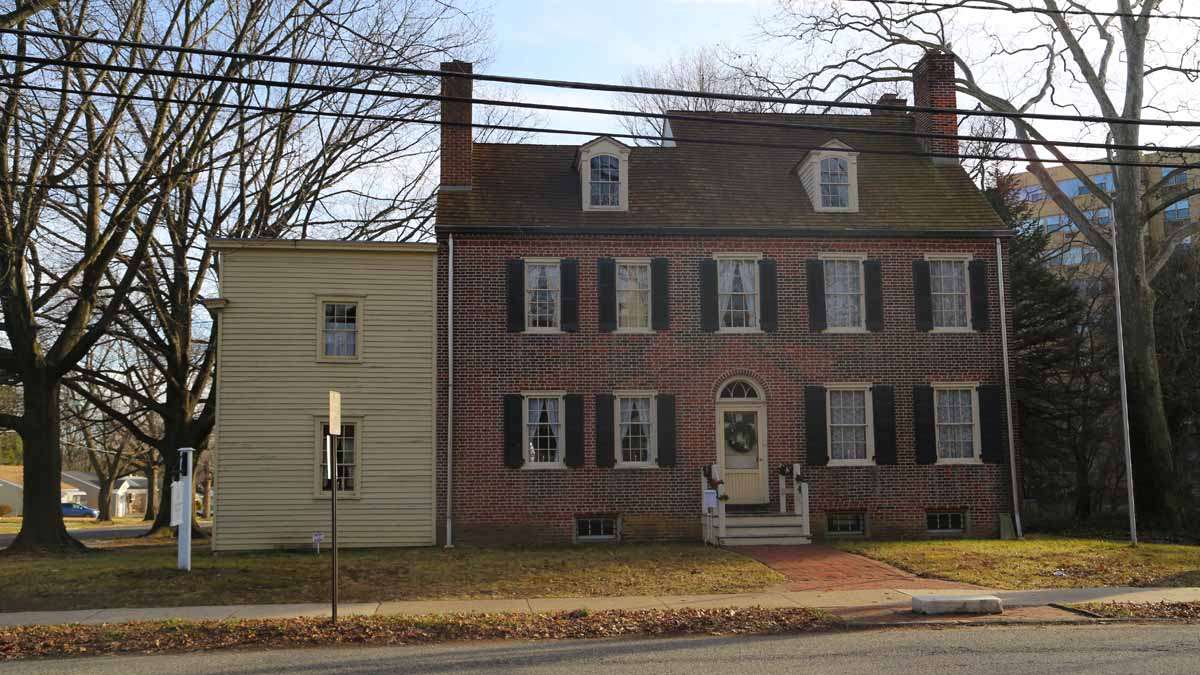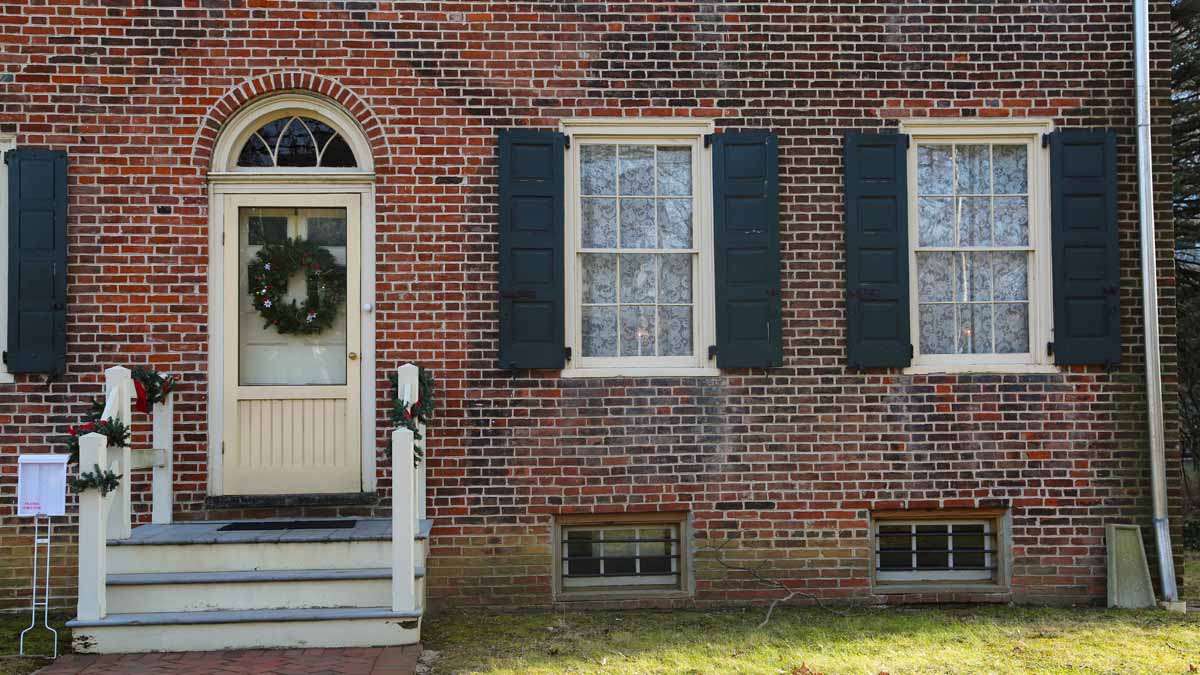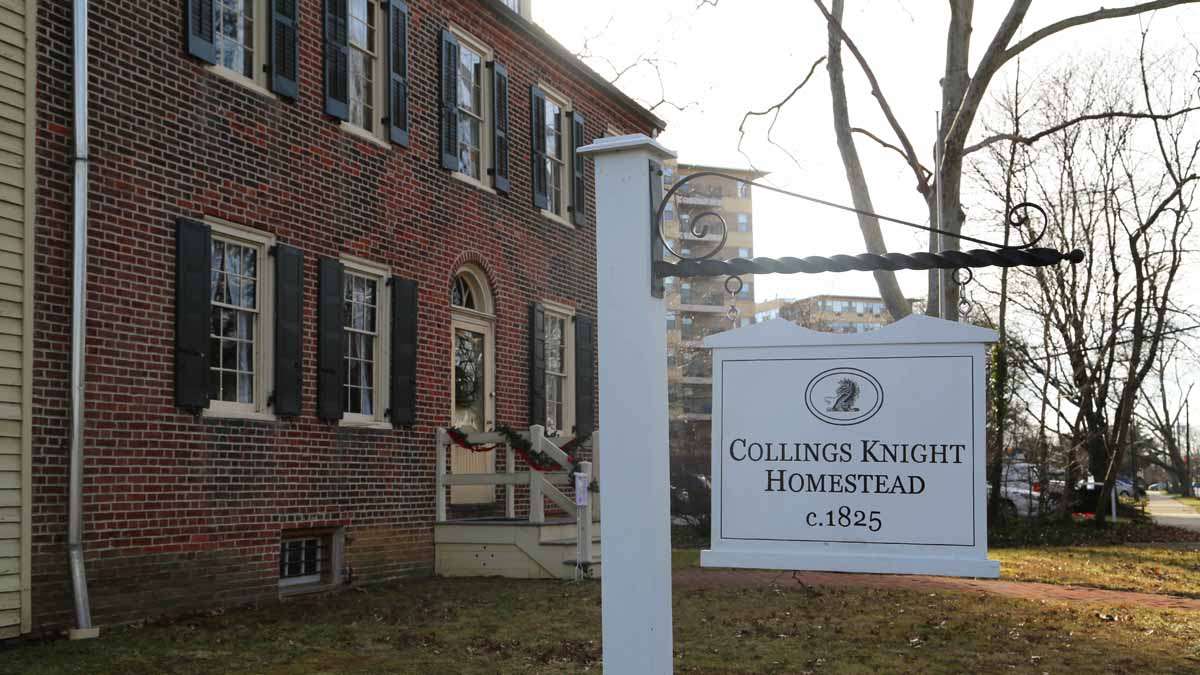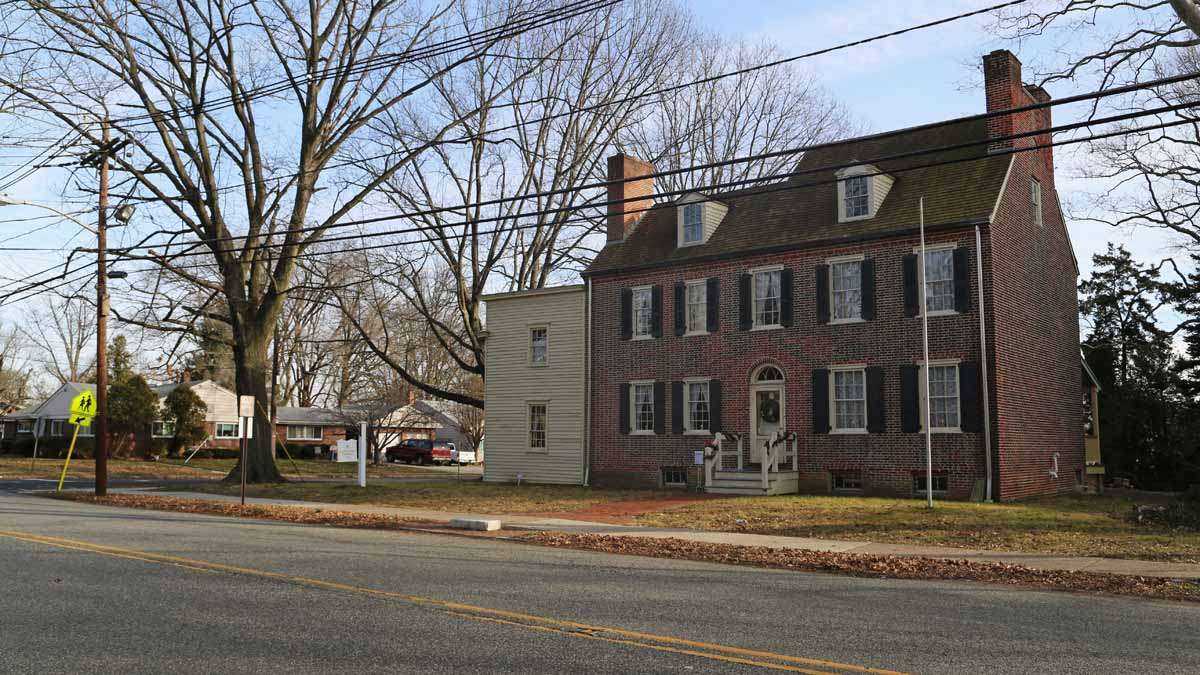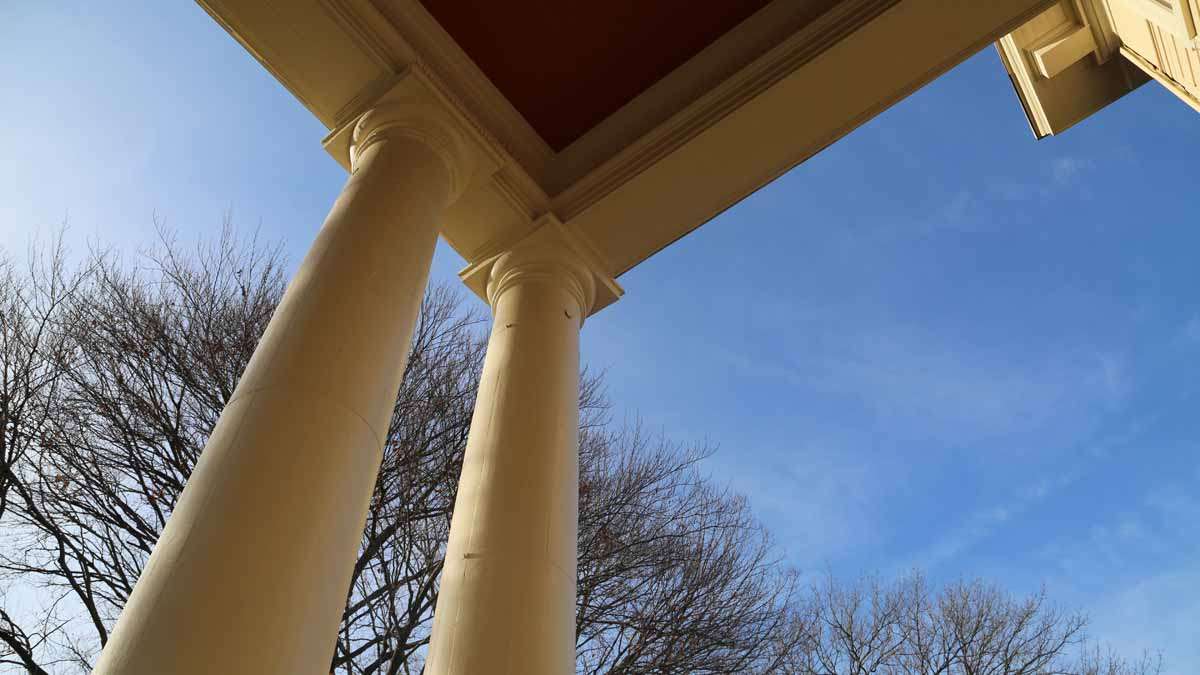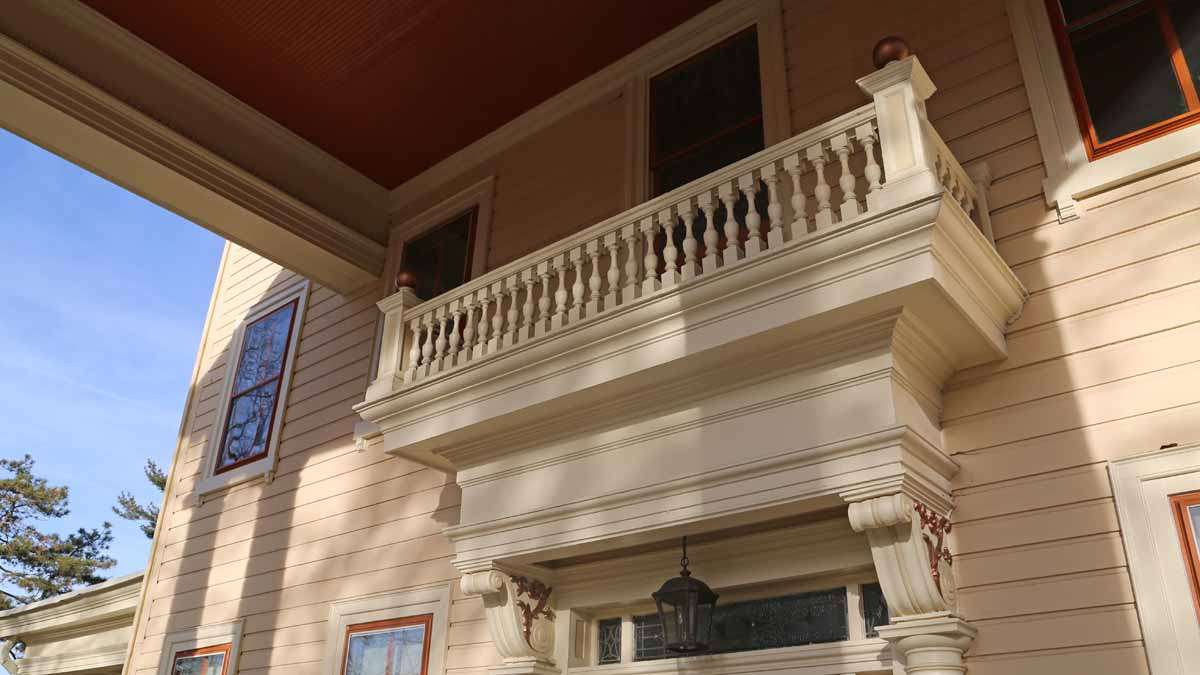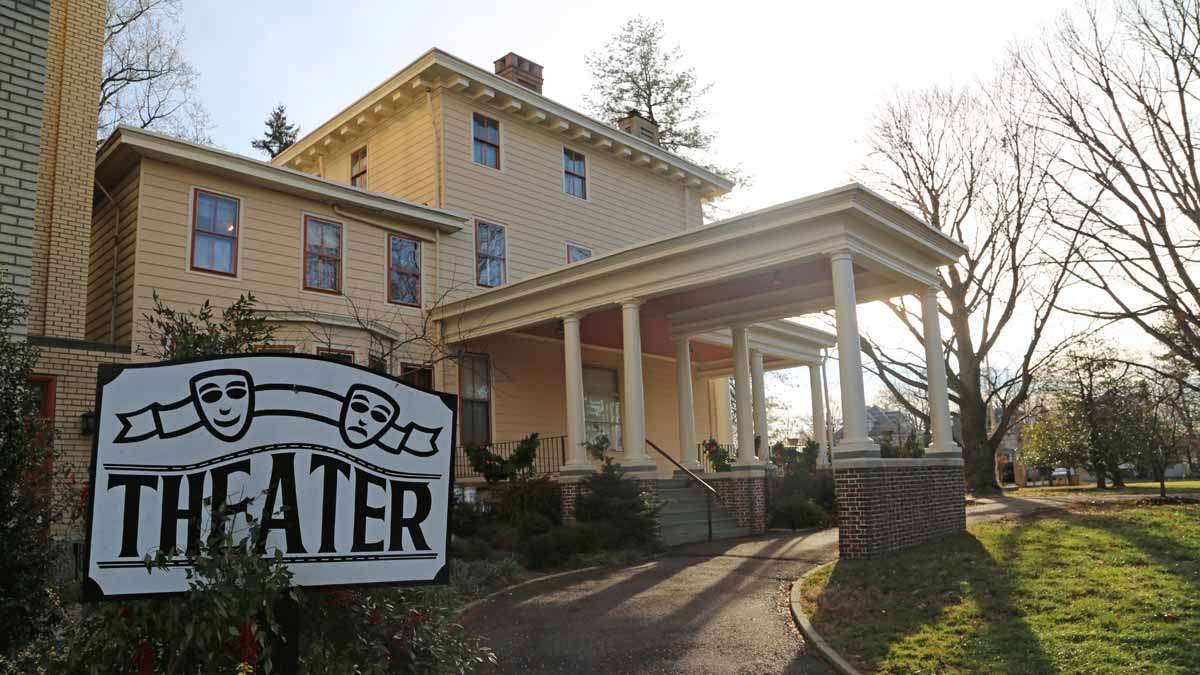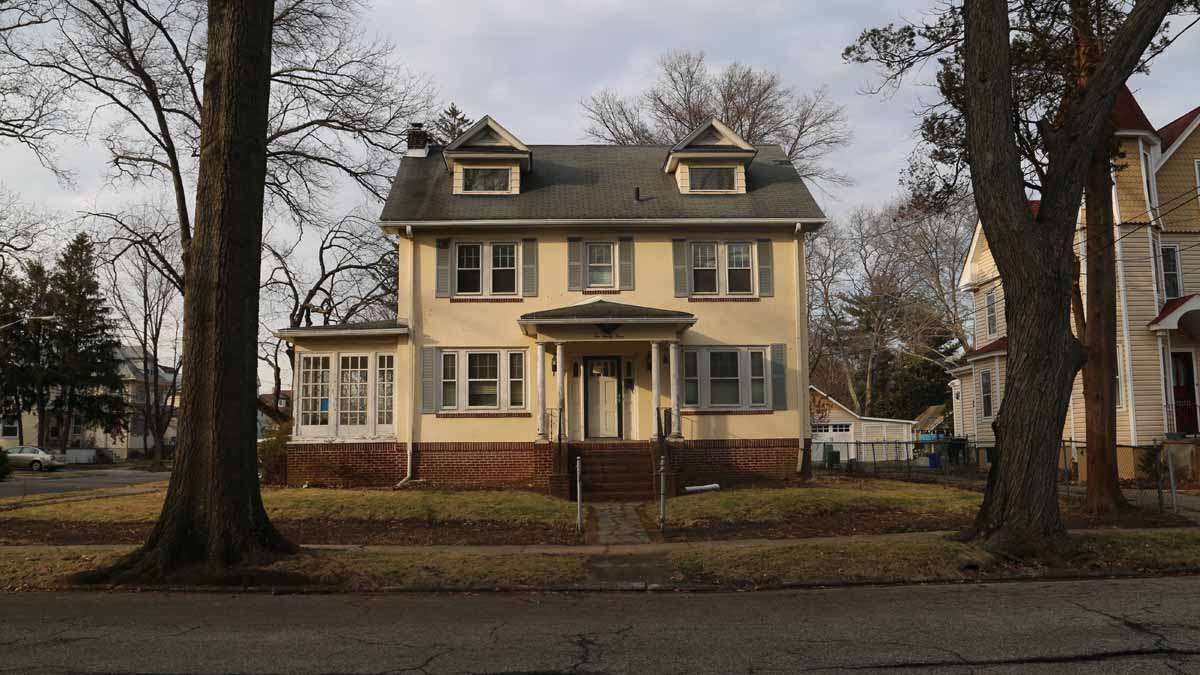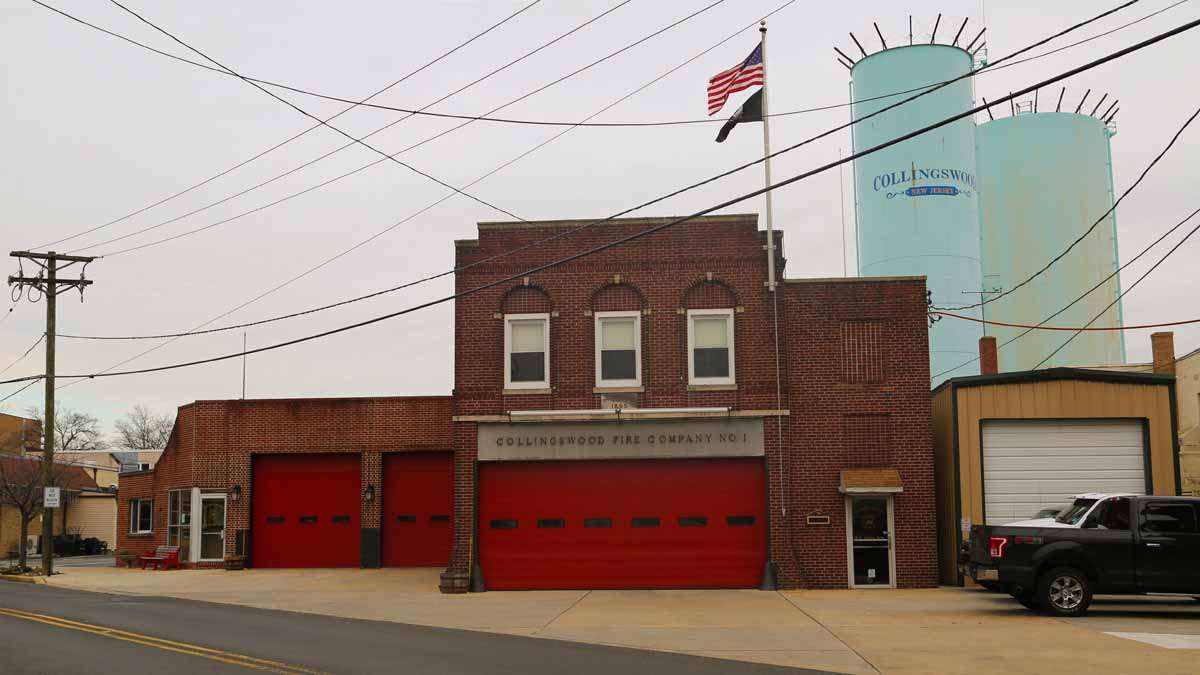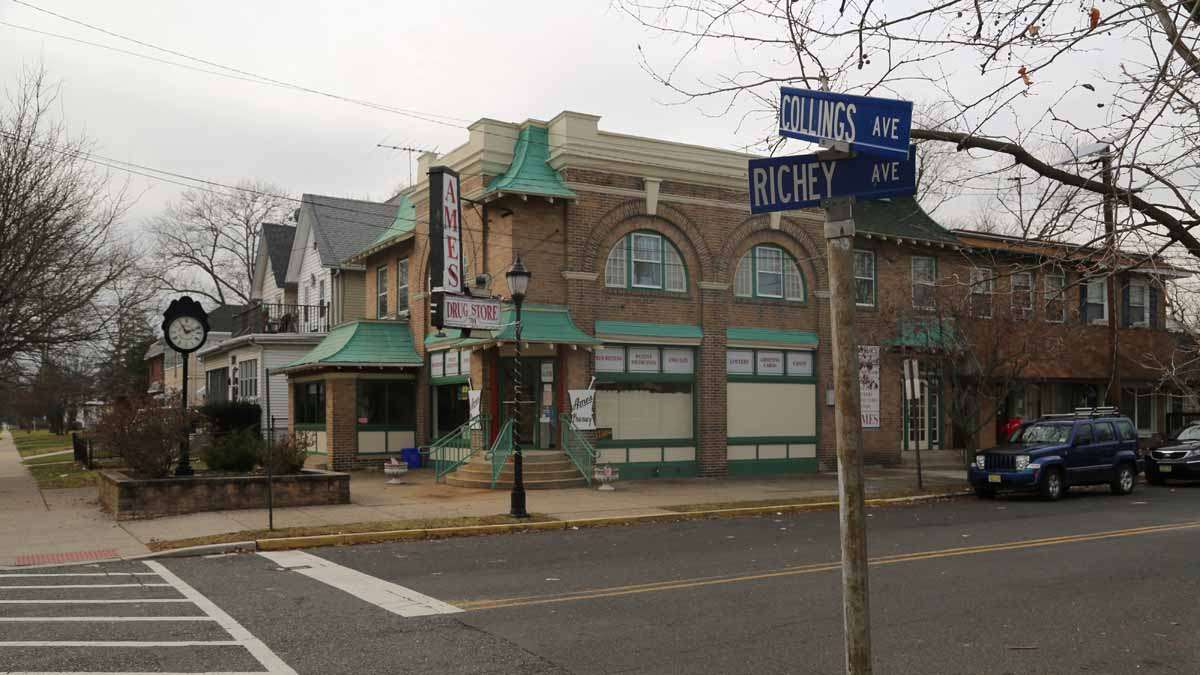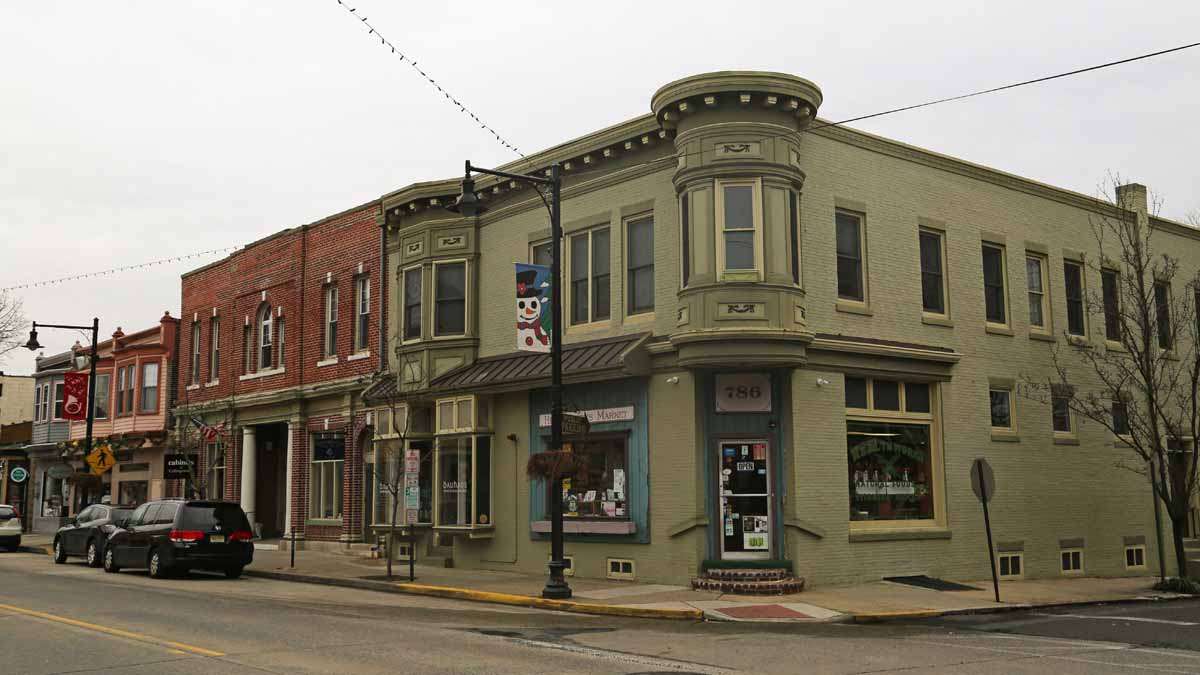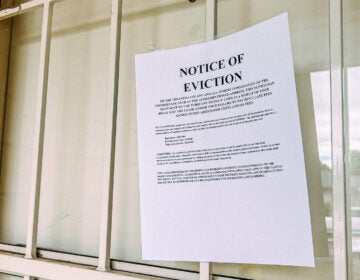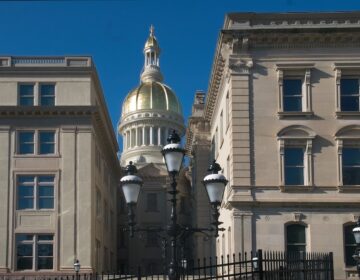Collingswood’s architectural treasures [photos]
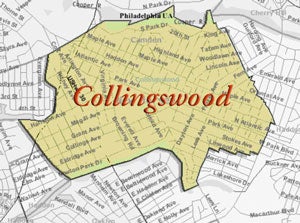 Collingswood, New Jersey, is a two-square-mile borough bounded by the Cooper River to the north and Newton Lake to the south — a residential suburb of Camden and Philadelphia with buildings in the district that reflect late-nineteenth and primarily early twentieth-century architectural styles.
Collingswood, New Jersey, is a two-square-mile borough bounded by the Cooper River to the north and Newton Lake to the south — a residential suburb of Camden and Philadelphia with buildings in the district that reflect late-nineteenth and primarily early twentieth-century architectural styles.
Typically the buildings are not in high style, but rather interpretations of the Queen Anne and Colonial Revival or representatives of this century’s “Comfortable House” movement. Town resident and wealthy philanthropist Edward Collings Knight, who inherited 127 acres of land from his father, donated the land that became Knight Park.
Haddon Avenue, formerly known as the Camden and Haddonfield Turnpike passes through the borough forming a “main street”. Here a vast variety of restaurants and shops form the downtown area that in 2009 was awarded 10 Great Streets by the American Planning Association “for the way it melds the past with the present”.
Marlene Granitz, the President of Proud Neighbors of Collingswood and a member of Historic Preservations Commission looks to encourage and spread the news about historic properties and historic preservations in Collingswood. The organization established in 1983 encouraged the storeowners and residents to look at the physical factors of their properties and prominently feature them. The effort was successful and soon Collingswood properties were listed on the national, state and local historic registers. “One the interesting things about Collingswood architecture I find is that not only in historic districts, but if you walk through the neighborhood streets, there is lots of surprise homes you can see with distinct architecture and that makes our collection of architecture in town interesting” Granitz said.
Historic Collingswood Theatre – 823 Haddon Avenue
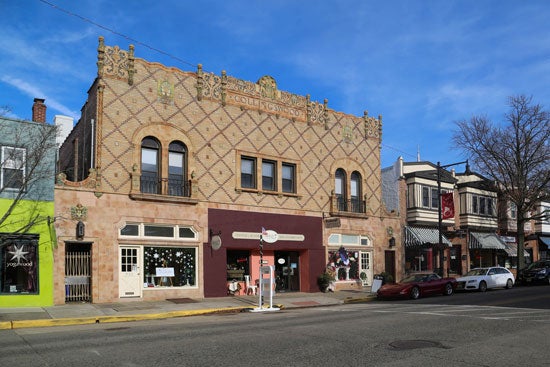
(Natavan Werbock/for NewsWorks)
Built in 1928 by prominent Philadelphia architect David Supowitz this Venetian-style, 1,197- seat polychromatic brick and terra cotta movie palace was active until 1962, now commercial stores and offices. Supowitz who designed 24 other cinema theaters including the Hollywood Theater in Atlantic City (1936) and the Goldman theater in Philadelphia (1946) was a prominent architect at the time. However only five of his theaters remain open today.
The details on the building and terra cotta ornaments such as leaf baskets, floral panels, butterfly tiles, own spring boxes and Bacchanalian faces adorn the building. A man and woman holding crown and lute above the iconic “Collingswood” sign make this unique building a contributing property individually listed on the National Register of Historic Places.
Collings-Knight Homestead – 500 Collings Ave
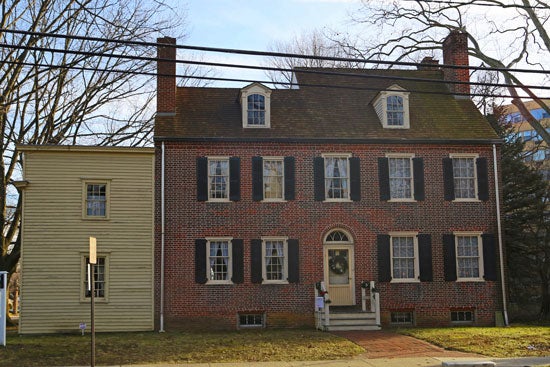
(Natavan Werbock/for NewsWorks)
Built in ca 1825, this 2 ½-story Federal-style red Flemish bond brick house constructed by Edward Zane Collings for himself and his widowed sister, Rebecca Knight, on farmland north of Newton Creek that he had inherited from his father in 1820. The property had been passed down from his great-grandfather, Robert Zane, an original settler and member of the 1682 Newton Colony. Edward, a young seed farmer, engaged the services of local carpenter John Ireland to construct a late Federal Style home built to imitate early Colonial houses that evolved over time with added wings.
The subsequent owner Charles Chase recognized the historic significance of the site and bequeathed the property to the Borough of Collingswood in 1967. Today, the Collings-Knight House stands at the corner of Knight Park as a tribute to the descendants of the founders of the Newton Colony, and the years of agrarian interests they upheld before the 19th-century development of Collingswood as a planned suburb. The house is listed in the National Register
Hurley Mansion – 315 White Horse Pike
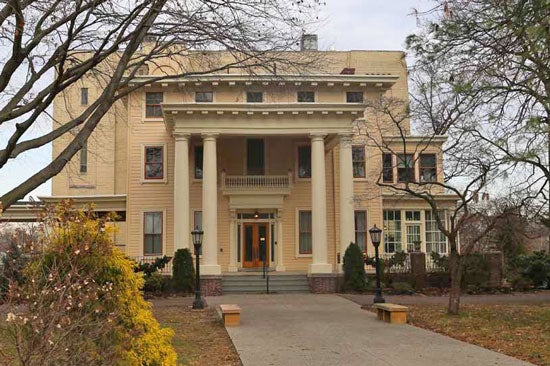
(Natavan Werbock/for NewsWorks)
Isaac Collings built the first house on the property for use as a country estate and gentleman’s farm in 1855. Philadelphian, Samuel French, of Smith Kline French, now pharma giant GlaxoSmithKline, purchased the mansion, which was called the White Mansion Farm, in 1864. The three-story, frame, and bevel-sided mansion is fashioned in the Italianate Villa Style. It has a boxy form accented with large 2 over 2 windows on the first and second floor, shorter windows on the third floor, and a flattish roof with an ornamental cornice supported by heavy dentils. The original mansion has a full wrap-around porch with very ornamental, sawn wood brackets and a central octagonal large-scale cupola. Henry Allen of Camden was the builder and architect. French used the property as a summer residence.
In 1886, E. C. Knight bought the property for the Collingswood Land Company. Six years later, Dr. Preston James moved his private insane asylum from Merchantville here. Dr. William Davis of Camden operated a women’s hospital here from 1901 until 1909, when he sold it to William Hurley of Camden, a regional department store magnate.
Hurley re-invested in the property adding the mansion’s Colonial Revival features, such as the monumental-scale Georgian Revival Style front portico with paired Tuscan columns holding a balustraded roof with modillion blocks, as well as the central doorway’s massive entablature supporting a second floor balcony, the east side’s two-story enclosed porch and west side’s open porch and porte cochere. Hurley named the property Dungarvan after his ancestral Irish birthplace. The Excelsior Scottish Rite purchased the property in 1930 from the Hurley estate and began construction of the temple and auditorium in 1931. In 2003, Collingswood Borough entered into a 50-year lease of the building, which is still owned by the freemasons.
Information provided by Proud Neighbors of Collingswood.
WHYY is your source for fact-based, in-depth journalism and information. As a nonprofit organization, we rely on financial support from readers like you. Please give today.


